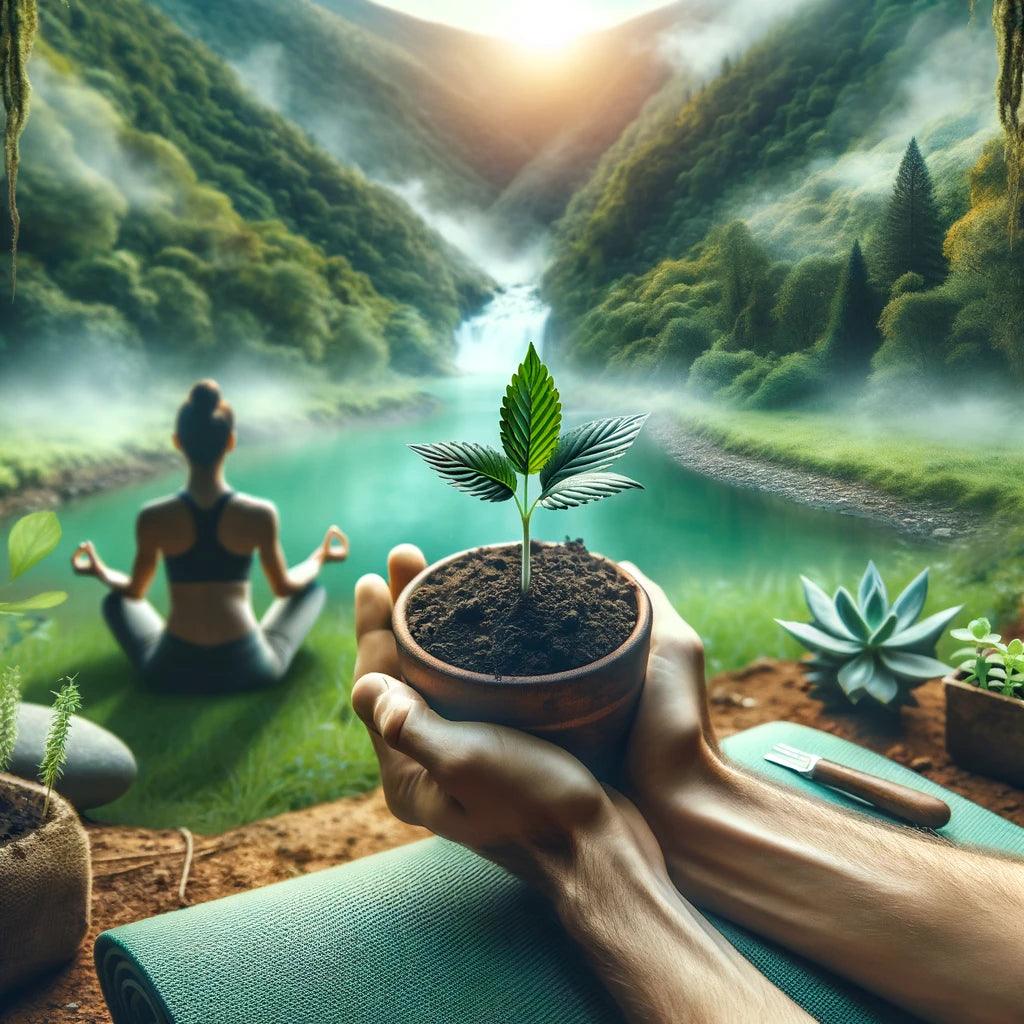If you want to analyze the existing combination between music and cannabis , there are two points of view. The influence cannabis has on artists and their music and the influence cannabis has on the music user. The second point of view is extremely subjective, and after having trivially underlined a probable amplification of the sensorial experience due to the effects of the substance, there is little left to add.
Or rather: any other consideration cannot ignore the listener's musical taste. From the use it makes of music (as background or as a "total" listening experience). From the ways of consumption (in private or at a concert). And by a myriad of independent variables attributable to his personality.
Furthermore, of course, there are many more listeners than artists. But only the latter have, in some cases, left searchable documentation on the way in which cannabis influenced their music . And they did so either indirectly through public statements or directly through their art. So let's deal with the artists.
We are talking here about marijuana consumption, since for now we don't know any artists who use light cannabis vapor before going to the pentagram. For the moment.
For convenience we will divide these artists into three groups: the first group consists of those artists who have embraced weed as a philosophy of life . In the second, those artists who more or less sporadically claim their right to consume weed through their music and their notoriety. Finally, the group of those who more or less directly reveal that they use it, even when they make music.
In the first case it is impossible not to start with Bob Marley , of course. We all know about him that he fervently adhered to the cult of Rastafarianism. To make a very, very short story, the Rastas are convinced that a marijuana plant was growing on the tomb of King Solomon (the founder of their lineage). And that its consumption is literally sacrosanct and recommendable.
Bob Marley's adherence to this precept was such that it is impossible to separate the man and the artist from the “ ganja ”. And we do not offend his memory when we say that he was perpetually under its influence. On the contrary.
Obeying his guided inspiration he brought reggae to today's worldwide diffusion. And when it's not the form (the slow but syncopated rhythm, the backbeat, the soft bass) that reverberates the effects of cannabis, it's the contents. The allusions or claims to the consumption of weed in his lyrics are incalculable: one of his albums, “Kaya” (one of the thousand thousand names for marijuana) is entirely dedicated to it.
Generally the grass is treated as the direct line to God, but there is no shortage of more prosaic situations. In 3 O'Clock Roadblock (from Natty Dread ) it tells of a Marley forced to throw away the grass (very regretful) at the sight of a night checkpoint. But this also happens to those who are not Rasta.
Outside the recording studio Bob Marley broke the taboo of the artist who smokes joints not only by smoking in front of any camera, but above all by revealing his naked and raw answers. The malice or morbidity of the interviewer on duty in years in which, at least in the West, the social stigma on smokers was still very strong (and the law very repressive).
It is also due to his perseverance that the slow process of granting consumer rights to those who profess to be Rastafarians began in Jamaica.
Once the founder died, a long line of followers on the island took up the baton, so to speak. All convinced and practicing Rastafarians and naturally avid cannabis consumers, including some of Marley's many sons. And even if no one has been up to it anymore (at least artistically) it is right to at least mention: Buju Banton (who, however, went from weed to cocaine trafficking and prison). Luciano (born Jepther McClymont ), Sizzla Kalonji , and Anthony B.
Off the island we have to include Snoop Dogg , famous Los Angeles rapper. Until 2012 he was simply an artist who smoked lots and lots of joints (and therefore theoretically to be placed in our second group). Then he came to a turning point following a trip to Jamaica.
With relative conversion to Rastafarianism, and as proof of this today he calls himself Snoop Lion (the lion is a cornerstone of Rastafarian iconography).
And even just for the sake of the flag we include our Alborosie (stage name of Alberto D'Ascola ). Very Sicilian reggae artist who in 2001 left Italy for Jamaica, where he obtained citizenship, and where he continued his career by choosing to engage with Rastafarian culture.
And here we are with the second group. Of its members we could say that compared to the former they practice a pagan cult of cannabis. An honorable mention undoubtedly goes to Cypress Hill . Famous American hip-hop rap group whose members have Mexican origins, who have always been advocates and supporters of the free trade of weed for therapeutic or recreational purposes.
Pieces like Hits from the bong , Stoned Is the Way of the Walk and Dr. Greenthumb leave little to the imagination. “ Dr. Greenthumb ” (“Doctor Green Thumb”) is also one of the pseudonyms under which the identity of Louis Freese , a member of Cypress Hill better known as T-Real, is hidden.
To demonstrate that their campaign to raise awareness of the use of cannabis was not a simple provocative pose, T-Real opened an authorized marijuana point of sale in Los Angeles.
The name? “ Dr. Greenthumb Dispensary ”. Obviously.
We could continue with Green Day , a well-known Californian rock band. Whose leader Billie Joe Armstrong has been a fan of weed since adolescence to the point of including it in the band's name: “green day”. In slang it stands for "a day spent smoking".
Among the Italians we must mention Article 31 , who did everything but hide their passion for cannabis . Musically speaking, it will be enough to mention "Maria" (which we could define as their anthem): a song in which, playing with a double meaning, it tells of a love story for grass. The same argument, net of stylistic differences, can be made for 99 Posse , who smoked upstairs behind and in front of the stage.
Naming all the members of our third group is simply a typist's challenge: rock stars - let's face it - have smoked everything from rosemary to og kush . Marilyn Manson won the sympathy prize for declaring that he had smoked human bone dust . Remaining within the limits of the acceptable, the pinnacle from a media point of view was reached by the Beatles (coincidentally). With the famous joint at Buckingham Palace .
And yet the record (perhaps) goes to the unsuspected Louis Armstrong , who in 1932 played Muggles (that's what jazz musicians called grass when it was still legal). There are dozens of songs dedicated to weed by artists who do not disdain its consumption: from Cab Calloway to 50 Cent via Ray Charles and Nina Simone . All black?
So look at Steppenwolf, Van Morrison, Black Sabbath (what's up?) and Neil Young . All famous for having been testimonials for Cannabis at least once.
In Italy, especially recently, a new front of young artists, mainly hip-hoppers, is... reviving the glories of 99 Posse and Articolo 31. But we choose to close with the old Stefano Rosso of Una storia disonesta . The name and title won't mean much to many, but in Italy the lines "Che bello/two friends, a guitar and a joint" are perhaps better known than the first article of the Constitution.






